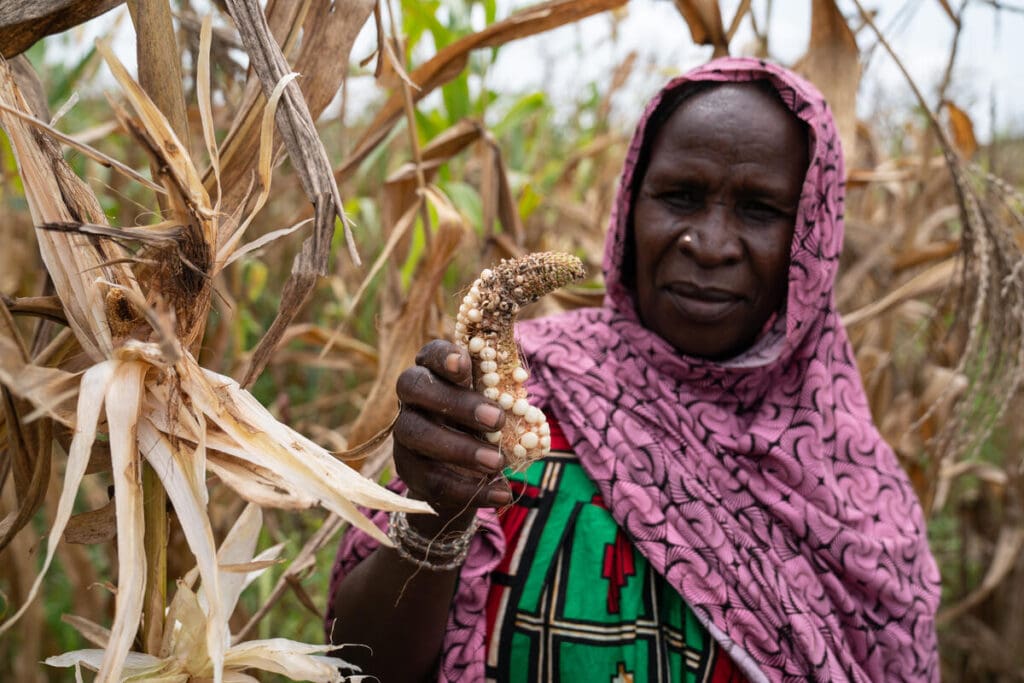WFP Calls for Action Ahead of World Food Day to Avoid Another Year of Record Hunger

ROME – The world is at risk of yet another year of record hunger as the global food crisis continues to drive yet more people into worsening levels of severe hunger, warns the United Nations World Food Programme (WFP) in a call for urgent action to address the root causes of today’s crisis ahead of World Food Day on October 16.
The global food crisis is a confluence of competing crises – caused by climate shocks, conflict and economic pressures – that has pushed the number of severely hungry people around the world from 282 million to 345 million in just the first months of 2022. The U.N. World Food Programme scaled up food assistance targets to reach a record 153 million people in 2022, and by mid-year had already delivered assistance to 111.2 million people.
“We are facing an unprecedented global food crisis and all signs suggest we have not yet seen the worst. For the last three years hunger numbers have repeatedly hit new peaks. Let me be clear: things can and will get worse unless there is a large scale and coordinated effort to address the root causes of this crisis. We cannot have another year of record hunger,” said U.N. World Food Programme Executive Director David Beasley.
The U.N. World Food Programme and humanitarian partners are holding back famine in five countries: Afghanistan, Ethiopia, Somalia, South Sudan and Yemen. Too often, it is conflict that drives the most vulnerable into catastrophic hunger with communications disrupted, humanitarian access restricted and communities displaced. The conflict in Ukraine has also disrupted global trade – pushing up transport costs and lead times while leaving farmers without access to the agricultural inputs they need. The knock-on effect on upcoming harvests will reverberate around the world.
Climate shocks are increasing in frequency and intensity, leaving those affected no time to recover between disasters. An unprecedented drought in the Horn of Africa is pushing more people into alarming levels of food insecurity, with famine now projected in Somalia. Floods have devastated homes and farmland in several countries, most strikingly in Pakistan. Anticipatory action must be at the core of the humanitarian response to protect the most vulnerable from these shocks – and a core part of the agenda at the 27th Conference of the Parties (COP27) next month in Egypt.
Meanwhile, governments’ ability to respond is constrained by their own economic woes – currency depreciation, inflation, debt distress – as the threat of global recession also mounts. This will see an increasing number of people unable to afford food and needing humanitarian support to meet their basic needs.
The U.N. World Food Programme’s operational plan for 2022 is the agency’s most ambitious ever. It prioritizes action to prevent millions of people from dying of hunger while working to stabilize – and where possible build – resilient national food systems and supply chains.
So far this year, the U.N. World Food Programme has increased assistance six-fold in Sri Lanka in response to the economic crisis, launched an emergency flood response in Pakistan and expanded operations to records levels in Somalia as famine looms. In Afghanistan, two out of every five Afghans have been supported by U.N. World Food Programme assistance. The U.N. World Food Programme also launched an emergency operation in Ukraine and opened a new office Moldova to support families fleeing the conflict.
With the cost of delivering assistance rising and lead times increasing, the U.N. World Food Programme continues to diversify its supplier base, including boosting local and regional procurement: So far in 2022, 47% of the food the U.N. World Food Programme has purchased is from countries where it operates – a value of $1.2 billion. The U.N. World Food Programme has also expanded the use of cash-based transfers to deliver food assistance in the most efficient and cost-effective way in the face of these rising costs. Cash transfers now represent 35% of the agency’s emergency food assistance.
The U.N. World Food Programme has secured $655 million in contributions and service provision agreements from international financial institutions to support national social protection systems. Similar efforts are underway to expand innovative climate financing partnerships. The U.N. World Food Programme continues to support governments with supply chain services, such as the procurement and transport of food commodities to replenish national grain reserves to support national safety net programs.
While these efforts provide succor to some of the severely vulnerable, it is against a challenging global backdrop in which the number of acutely hungry people continues to increase requiring a concerted global action for peace, economic stability and continued humanitarian support to ensure food security around the world.
# # #
The United Nations World Food Programme is the world’s largest humanitarian organization, saving lives in emergencies and using food assistance to build a pathway to peace, stability and prosperity for people recovering from conflict, disasters and the impact of climate change.
Follow us on Twitter @WFPUSA and @wfp_media




